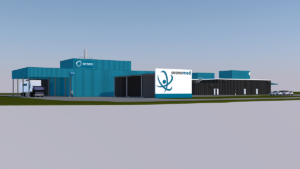Update of bioeconomy strategy unsure
Uncertainty regarding the amount of future funding and political support from the European Commission for the bioeconomy is set to hamper investments into the switch from oil-based industry production to renewable, bio-based manufacture in Europe. The schedule for the review of the bioeconomy strategy has been delayed until the end of 2017. More importantly, it is not yet certain if the strategy will be updated.
Accordingly, it remains unclear for investors, industry, and private-public partnerships, such as the €3.7bn Bio-based Industry JU, whether the European Commission will change the initial strategy adopted in 2012. With Horizon 2020, the Commission had doubled its funding for the bioeconomy compared to FP7, to an amount of about €4bn.
After the adoption of the Circular Economy Action Plan, the Commission decided to examine the contribution of its bioeconomy strategy to the circular economy. The debate as to whether the bioeconomy strategy needed a revision or not continued at the Environment Council (ENV) in June 2016. This year, the Commission expects several expert reports, including one in June, the Bioeconomy Stakeholders Manifesto, a societal agenda for bioeconomy finalised by the European Bioeconomy Panel: a group of primary producers, policy-makers, public administrations, scientists, and researchers, as well as civil society interest groups. Finally, in mid-November 2017, results of the current evaluation of the strategy are to be presented at a Bioeconomy Day in Brussels, Waldemar Kütt, Head of Unit Bioeconomy Strategy at DG Research, told European Biotechnology. A decision on a possible revision of the bioeconomy strategy will likely be taken early 2018. If the strategy is then revised, an updated review will be available at the end of 2018 at the earliest.
Preparing the ground for a circular bioeconomy
- Support the networking of SMEs: As the development of bio-based products and processes is often hampered by a lack of cooperation and investment, BioSTEP recommends that public agencies act as matchmakers. Creating a coherent regulatory framework would be crucial for supporting more investments in the field.
- Create public acceptance: As a first step for creating broad acceptance of bio-based products and processes, BioSTEP recommends involving NGOs and civil society organisations in discussions regarding the implementation of the bio-based and circular economy. Trust in biobased products (versus distrust in green claims from the industry) would be a precondition for market uptake. Thus, development of a common understanding of benefits and risks would be crucial for fostering a positive perception in the general public. However, only the right mix of communication tools (namely, education, information, discussion, or knowledge production) will bring the message to the specific target group.
- Create opportunities for input at all stages of strategy development: Besides built-in participation, stakeholders must have the opportunity for intervention in later stages (at the implementation/evaluation stage) of the bioeconomy and circular economy strategies, according to the bioSTEP paper.


 Orano Med SA
Orano Med SA fvm.dk
fvm.dk Office of Congresswoman Ayanna Pressley - https://pressley.house.gov/press-kit/
Office of Congresswoman Ayanna Pressley - https://pressley.house.gov/press-kit/